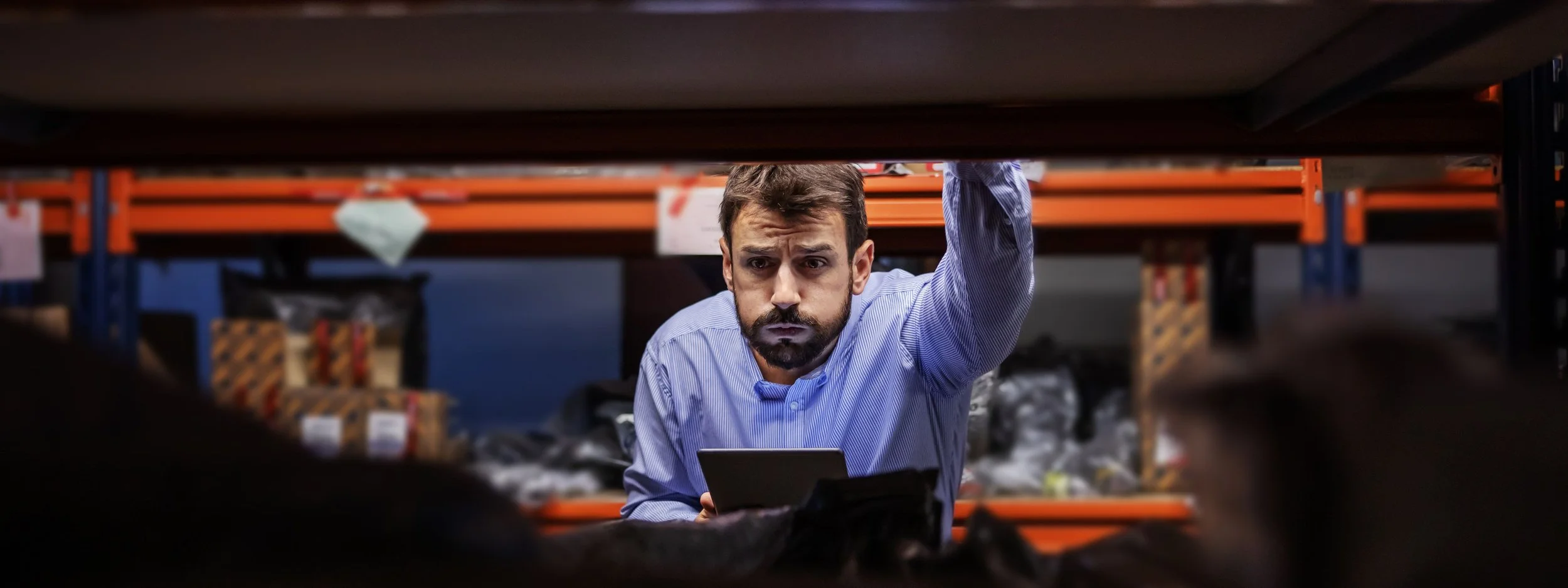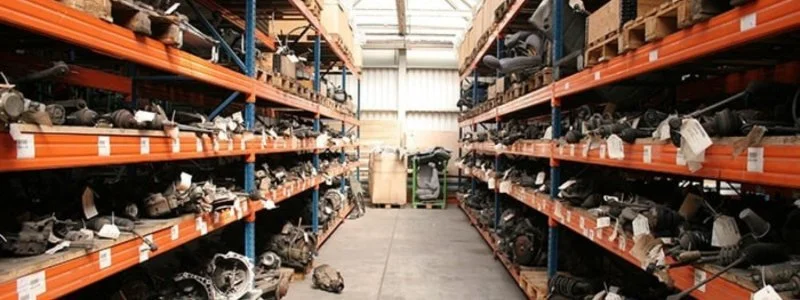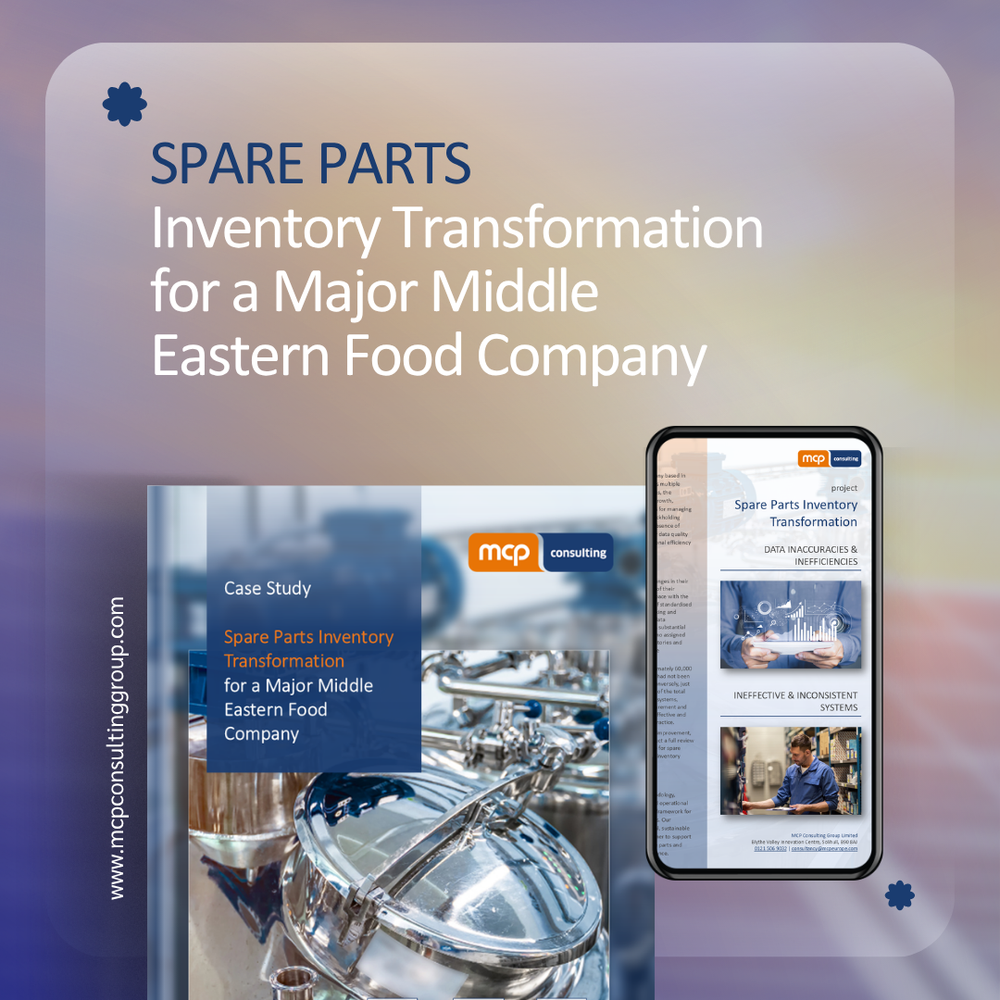Why Training is the Missing Link in Your Inventory Strategy
When organisations set out to reduce costs, improve uptime, or enhance maintenance efficiency, spare parts inventory is often seen as an operational detail rather than a strategic lever.
Yet the reality is stark: poor spares management costs businesses far more than they realise through tied up working capital, emergency purchases, excessive stockholding and critical downtime.
At MCP, we’ve worked with clients across a broad range of sectors, from heavy industry and manufacturing to commercial operations. Despite the diversity of these industries, the same challenges in spare parts management surface time and again. One recurring and often overlooked root cause stands out: a lack of internal capability to manage and sustain effective practices.
That’s why training in spares and materials management isn’t just a ‘nice to have’- it is the missing link between strategy and results.
The Invisible Drain on Your Business
Spare parts may seem low-profile but when managed poorly, they create very prominent problems. We often see:
Outdated, obsolete, redundant and duplicate parts data, with no naming conventions or cost attribution
Stock that hasn't moved in years, quietly consuming working capital
echnicians spending hours searching for parts, delaying maintenance action
Emergency orders at premium prices, due to poor visibility and planning
Unreliable CMMS records, distorting decision-making and asset costing
In one case, a client had over 60,000-line items but 50% hadn’t been issued in the past three years. Meanwhile, just 10% of items represented 70% of annual usage value. Stock levels weren’t aligned to actual demand, and many items had no cost assigned at all. (Read full case study here.)
These inefficiencies affect more than the stores team - they impact engineering, procurement, finance and ultimately - your bottom line.
We Know What Works – And Why It Doesn't Last Without Training
At MCP, we use a structured methodology to tackle spare parts issues:
1.) Data audit and cleansing
2.) Process and systems alignment
3.) Inventory optimisation
4.) Criticality analysis and BOM development
5.) Supplier and part rationalisation
6.) Ongoing governance and master data management
We've seen real transformation:
1.) Over 10–15% reduction in annual spend
2.) Improved asset uptime and technician productivity
3.) Dramatically reduced search times and stock-outs
4.) More accurate lifecycle costing and decision support
But here’s the key: none of these improvements are sustainable unless your people know how to manage spares properly.
Training: The Missing Link Between Strategy and Sustainability
You can have the best systems and processes in place, but if staff don’t understand what good spares management looks like, and how to maintain data quality, apply criticality or manage stock policies - improvements will quickly unravel.
That’s why we offer a dedicated Spares & Materials Management training course designed to provide an understanding of the key elements of effective spares management, including:
1.) Identifying and cleaning poor data
2.) Standardising naming conventions and cost attribution
3.) Setting stock levels based on demand and criticality
4.) Managing master data and catalogues in CMMS (e.g. SAP)
5.) Defining stocking policies and reducing unnecessary inventory
6.) Supporting accurate and reliable maintenance planning
Whether your team is in engineering, procurement, maintenance or stores, this course provides practical approaches they can apply immediately - supported by MCP’s decades of real-world experience.
From Tactical to Strategic: Investing in Capability
Too often, spares management is reactive. By investing in training, you can shift it to a proactive, strategic discipline - one that reduces cost, improves reliability and supports better decision-making across your operations.
We’ve helped pharmaceutical companies, port operators, food manufacturers and many other organisations worldwide, reduce duplicated stock, improve data quality and release working capital - while building long-term capability through structured training.
Whether you're struggling with out-of-control inventory, inaccurate data or rising maintenance costs, training your people is the fastest and most sustainable way to start fixing it.
Ready to Close the Gap?
If you’re serious about improving spare parts management, don’t stop at process improvement. Empower your team with the knowledge and skills to sustain it.








